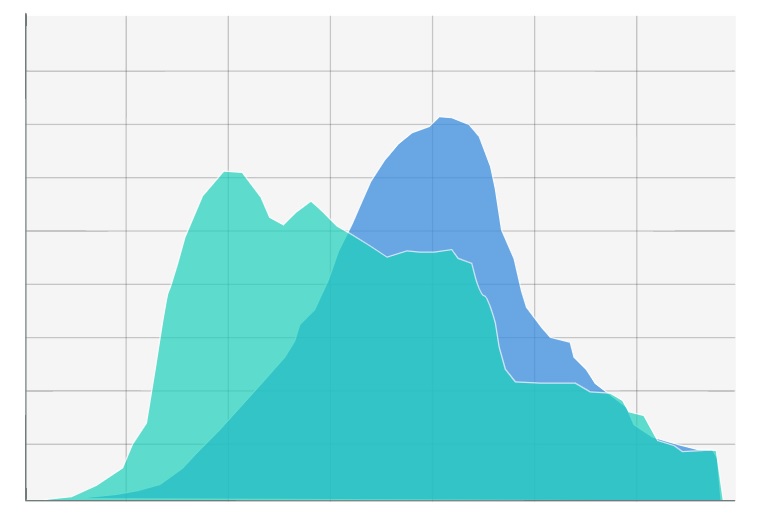From analyzing business growth trends to decoding weather patterns, visualizing data through charts has become an integral part of our everyday lives. Among the multitude of chart types available, area charts have a unique place. An area chart is a form of data visualization that uses coloring between line segments and axes to highlight quantities. In this article, we will delve into what an area chart is useful for and how to use them effectively.
Understanding the Basics of an Area Chart

So, what is an area chart? Area charts, similar to line charts, visualize data change over a continuous interval or time span. They effectively illustrate the magnitude of trend-based data, making it easy for viewers to understand overall patterns. Colored spaces beneath lines communicate volume, while the line trend highlights data direction.
To better understand area charts, it helps to envision a line graph with colors filled beneath to represent quantity. This color illumination allows areas of higher intensity or frequency to stand out more prominently.
In terms of design, area charts usually follow a chronological X-axis (horizontal) and a numerical Y-axis (vertical). While the X-axis represents the time series, the Y-axis denotes the quantitative representation of the variable. The colored areas are the mathematical areas between the line segments and the X-axis.
Different types of area charts serve different purposes. Basic area charts are ideal for showing trends over time for one or multiple groups, while Stacked and 100% Stacked Area charts are perfect for displaying multiple group trends and their cumulative totals.
However, for accurate interpretation, one must be aware of the timeline, axes, plot points, and the area underneath each line, as they play pivotal roles in conveying the right information. When used correctly, an area chart can effectively communicate big data in a simple, aesthetic, and understandable manner.
The Significance of Area Charts in Data Visualization
Area charts play a crucial role in the realm of data visualization. They deliver value beyond merely visual appeal or readability. Area charts impart a clear picture of long-term trends, patterns, comparisons, and the complete trajectory of a given set of data.
They are highly versatile and can be employed in a multitude of scenarios, be it measuring revenues, tracking stock market trends, comparing product performances, or projecting population growth. In essence, their use is prolific in any situation where understanding the proportional distribution or cumulative total over time is crucial.
Their capability to visually segregate data segments, as well as represent the total of the data, make them an excellent tool in decision-making processes. Using area charts, the viewers can observe and analyze trends and comparisons at a glance, leading to informed, data-driven decisions.
Most notably, their interactive nature in digital platforms enables users to delve deeper into specific data points, fostering more comprehensive understanding and knowledge.
Wide-Ranging Uses of Area Charts in Different Fields
Area charts find application in a diverse range of fields, essentially anywhere where there is a need to comprehend data trends over time. From finance to healthcare, education to software development, area charts are ubiquitous.
In the finance sector, these charts are prominently used to represent stock market data over time. Comparisons of different stocks or estimations of cumulative returns can be efficiently conveyed using area charts. Also, budgeting and financial planning in businesses are made easier with these visual aids.
In the realm of public health, area charts help monitor disease outbreaks, track vaccination rates, and showcase demographic changes over time. Similarly, in education, these can be utilized to compare student performances or analyze the uptake of various courses.
For project management, area charts can represent progress over time, resource allocation, or tracking deliverables against deadlines. In essence, the use of area charts extends as far as the need for data interpretation and trends over time exists.
Overall, area charts are an invaluable tool in data visualization. They deliver clarity to complex datasets, aid in decision-making processes, and promote data-driven discourse across various sectors. With the right understanding and effective use, area charts can become instrumental in decoding trends, comparisons, and distributions over time.








